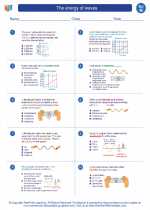Bones
Bones are the rigid organs that form the endoskeleton of vertebrates. They provide support and protection for the body, as well as playing a crucial role in movement, blood cell production, and mineral storage.
Anatomy of Bones
Bones are composed of two types of tissue: compact bone and spongy bone. Compact bone is the hard, dense outer layer that provides strength and protection, while spongy bone is the porous, inner layer that contains bone marrow and provides flexibility and shock absorption.
At the microscopic level, bones are made up of collagen, a protein that provides flexibility, and calcium phosphate, a mineral that provides strength and hardness.
Functions of Bones
1. Support: Bones provide a framework for the body and support the muscles and organs.
2. Protection: Bones protect vital organs such as the brain, heart, and lungs.
3. Movement: Bones, along with muscles, facilitate movement and locomotion.
4. Blood cell production: Bones contain bone marrow, where red and white blood cells are produced.
5. Mineral storage: Bones store minerals such as calcium and phosphorus, which are essential for various bodily functions.
Types of Bones
There are five main types of bones:
1. Long bones: Found in the arms, legs, fingers, and toes.
2. Short bones: Found in the wrists and ankles.
3. Flat bones: Found in the skull, ribs, and shoulder blades.
4. Irregular bones: Found in the spine and hips.
5. Sesamoid bones: Small, embedded in tendons, such as the patella (kneecap).
Common Bone Disorders
1. Osteoporosis: A condition characterized by weakened and brittle bones, often due to a loss of bone density.
2. Osteoarthritis: A degenerative joint disease that affects the cartilage and underlying bone, causing pain and stiffness.
3. Fractures: Breaks or cracks in the bone, often caused by trauma or excessive force.
Study Guide
- What are the two types of tissue that make up bones?
Answer: Compact bone and spongy bone. - What is the function of bone marrow?
Answer: Bone marrow produces red and white blood cells. - Give an example of a long bone.
Answer: Femur (thigh bone). - What mineral is essential for bone strength and hardness?
Answer: Calcium phosphate. - Name one common bone disorder and describe it.
Answer: Osteoporosis - a condition characterized by weakened and brittle bones due to a loss of bone density.






